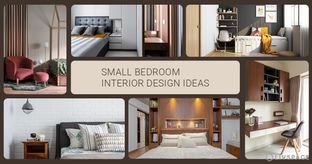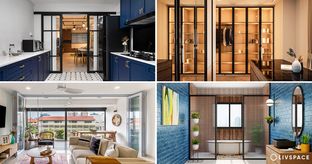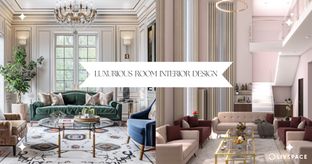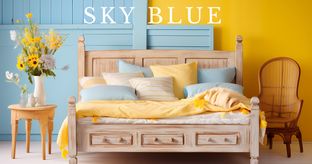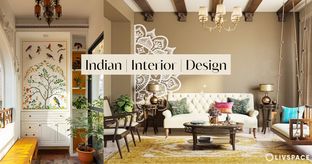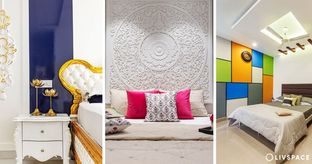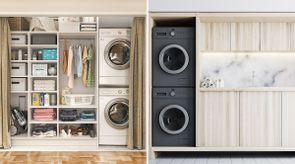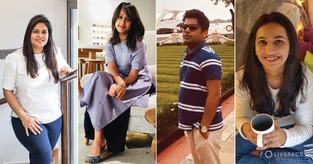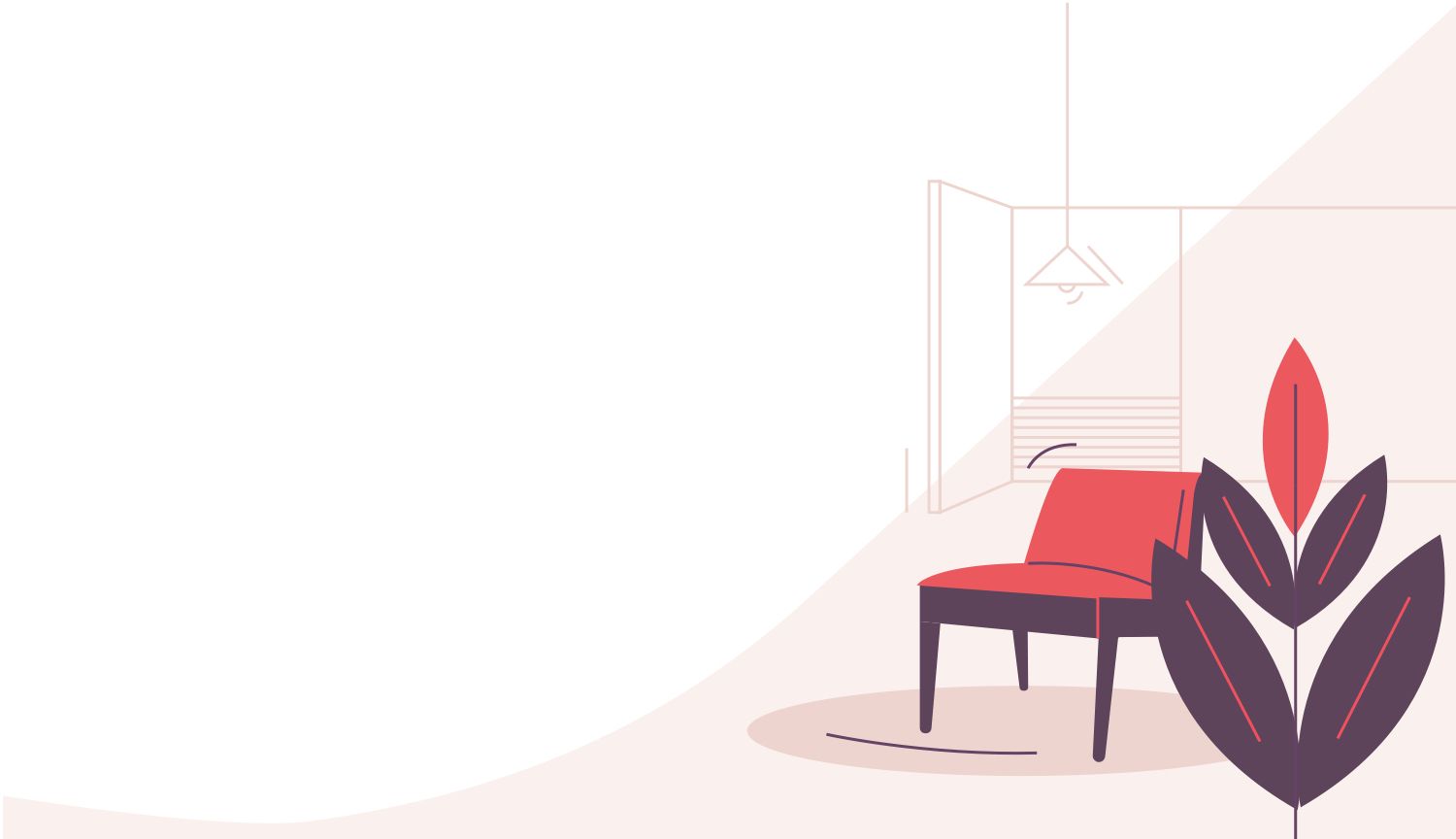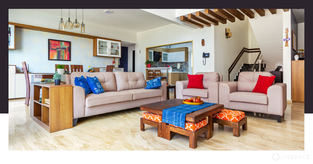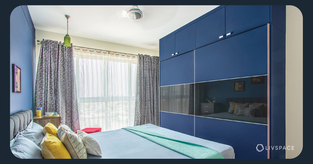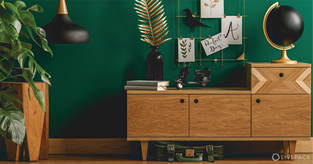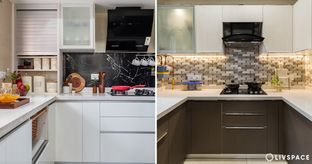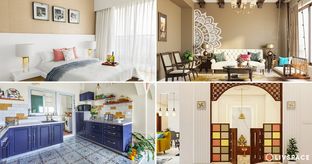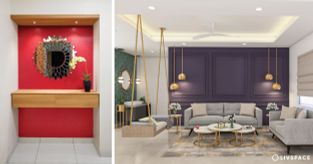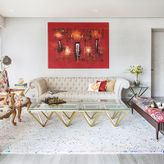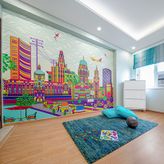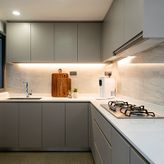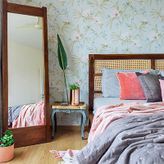In This Article
- #1: What is interior design?
- #2: Who is an interior designer?
- #3: What are the interior design styles popular in India?
- #4: How much does interior design cost?
- #5: The big question: Should you invest in hiring an interior designer?
- #6: What does the design process at Livspace look like?
- #7: How to prepare for your first meeting with an interior designer?
- #8: What is the difference between interior design and interior decoration?
- #9: What are the 7 elements of interior design?
- #10: What are the 5 concepts of interior design?
- #11: What is the golden rule in interior design?
- #12: What are budget-friendly interior design ideas for Indian homes?
- #13: How do I incorporate Vastu Shastra into modern interior design?
- What are the latest interior design trends in India for 2025?
- How can Livspace help you?
What is interior design, you might wonder, as you stand in your own home feeling slightly overwhelmed by blank walls and mismatched furniture? It’s far more than simply arranging pretty objects or following the latest trends from glossy magazines.
In India’s rapidly evolving urban landscape, where compact flats have become the norm and joint families navigate shared spaces, understanding interior design concepts has never been more crucial. It’s about making peace with your square footage, whether you’re dealing with a studio apartment in Mumbai or a sprawling bungalow in Bangalore. From the ancient principles of Vastu Shastra to contemporary minimalist aesthetics, interior design in India is a delightful contradiction—a dance between tradition and modernity,
#1: What is interior design?
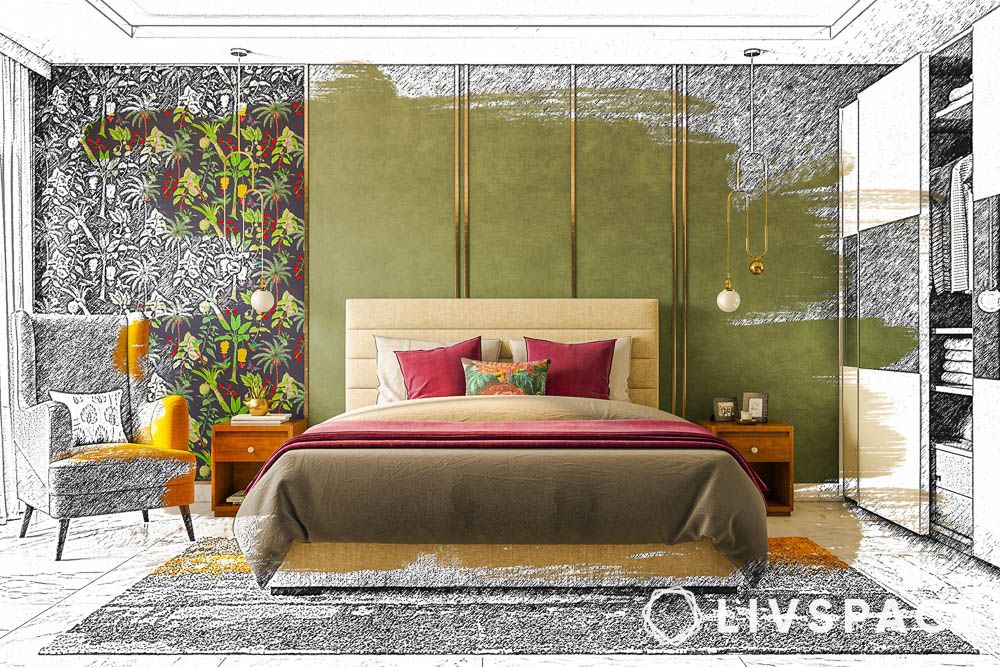
Right, let’s cut to the chase. Interior design is basically the art of making spaces work for the people who live in them, whilst also making them look gorgeous. It is a delicate balance between form and function, where every choice—from the colour of your walls to the height of your dining table—affects how you live your daily life.
#2: Who is an interior designer?

An interior designer is part therapist, part project manager and part creative genius. Unlike your well-meaning neighbour who’s “got an eye for these things,” interior designers have proper qualifications—degrees in design or architecture, understanding of building codes, and the uncanny ability to visualise how a space will look before it exists. They’re project managers who coordinate with contractors, creative visionaries who see potential in the most hopeless spaces, and occasionally, miracle workers who can make a 500-square-foot apartment feel like a palace.
#3: What are the interior design styles popular in India?
Oh, the eternal question that keeps us scrolling through Pinterest at 2 AM! Indian homes are having a proper identity crisis these days, in the best possible way. The following interior design styles are currently popular in India:
| Interior design style | Distinctive features | Livspace stylist tips |
| Indian traditional | — Vibrant colours — Solid wood furniture — Handicrafts and folk art items | — Use wood-carved furniture — Rich colours |
| Minimalism | — Clutter-free — Neutral colour palette — Concealed storage | — Uncluttered space — Monochromes — Use colour as an accent |
| Contemporary | — Natural light — Neutral scheme with few pops — Statement walls and clean design | — Mix different textures and materials |
| Bohemian | — Variety of patterns — Low seating — Curios and refurbished furniture | — Free-spirited approach — Curation and layering of multicultural textiles, artworks, decor |
| Scandinavian | — Understated style — Light furniture — Natural light | — Natural textures — Artwork as focal points |
| Mid-century modern | — Simplicity and functionality — Organic forms — Iconic decor pieces | — Function over ornament — Use of teak, oak, rosewood and metal |
| Transitional | — Mix of old and new designs — Clean lines — Neutral colours with subtle patterns | — Modern materials — Clean lines — Decorative detailing |
| Eclectic | — Neutral + accent colour — Decor should have some commonality — Gallery wall | — Use objects you love — Handmade items — Statement decor |
| Art Deco | — Deep wall colours — Arched windows Sunburst patterns | — Geometric designs as ornamentation — Rich materials and textiles — Ornamental light fixtures |
| Industrial | — Neutral colours — Warehouse look Exposed brick walls | — Raw, natural and edgy — Unfinished walls and exposed pillars — Steel and wood beams |
Also Read: 11 Popular Design Styles You Need to Explore for Your Home
#4: How much does interior design cost?
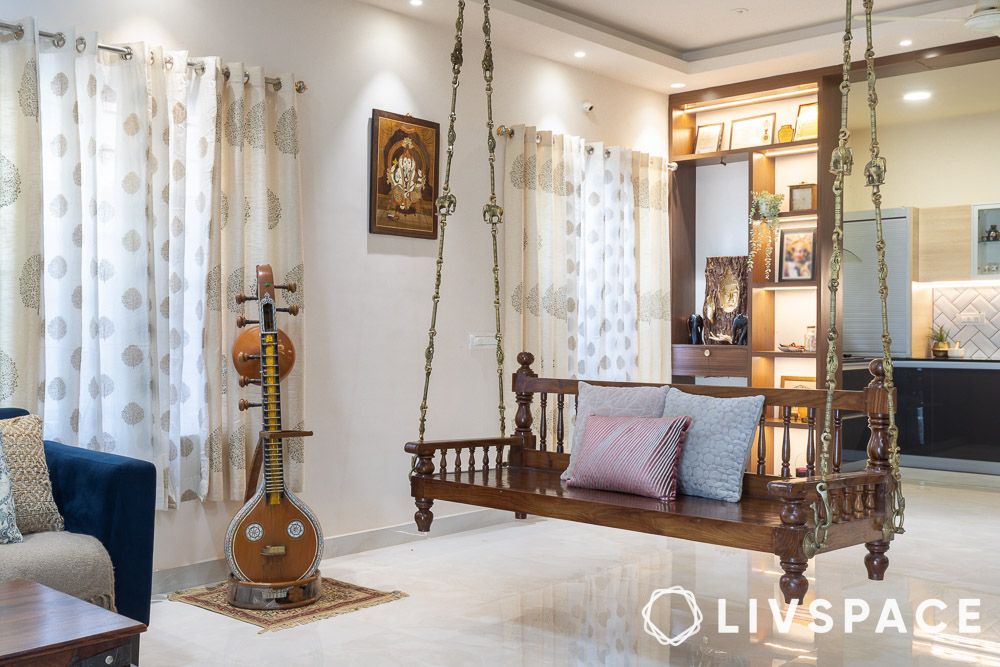
Ah, the question that makes everyone’s palms sweat a bit. Interior design costs in India are as varied as our monsoons—unpredictable and depending entirely on where you are and what you’re after. The interior design and designer cost in India will depend upon multiple factors like location, size of your home, scope of the project and materials used among other things. However, in general, the interior design cost can range between ₹6,00,000 to ₹30,00,000*.
*These Livspace interior design costs per square foot are for reference only; exact costs might differ according to the nature of your requirements, size of home and location. Talk to our designer to get a free quote today.
#5: The big question: Should you invest in hiring an interior designer?
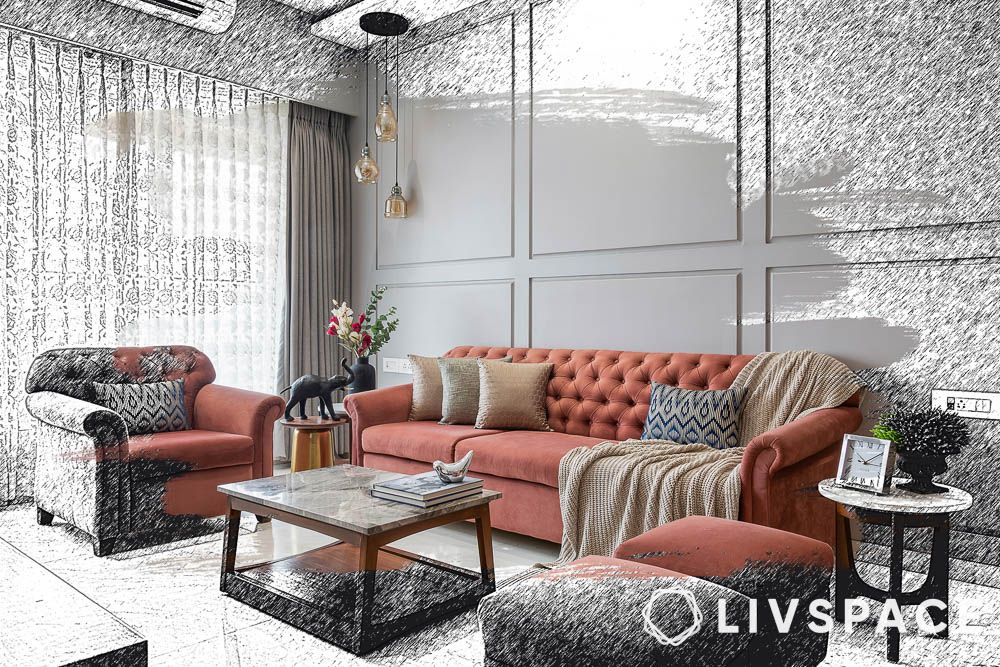
If you’ve got the budget and your project involves more than just buying new cushions, then absolutely yes. Professional designers are worth their weight in gold for significant renovations—they’ll save your time and money in more ways than one.
- Prevent costly mistakes: Your designer will be aware of high-quality products that fit your budget. They will help ensure there are no hidden costs that sneak in at the last minute
- Save time: Getting interiors through several people can be stressful, tiring and time-consuming. A designer will work efficiently to ensure everything finishes on time, thereby creating a hassle-free experience for you. Moreover, this will also help in getting high-quality interiors with minimum effort
- Get quality assurance: Since interior designers know how to pick the right products and services, your home will certainly have the edge in terms of quality! Additionally, at Livspace, we provide 146 quality checks
#6: What does the design process at Livspace look like?

#7: How to prepare for your first meeting with an interior designer?
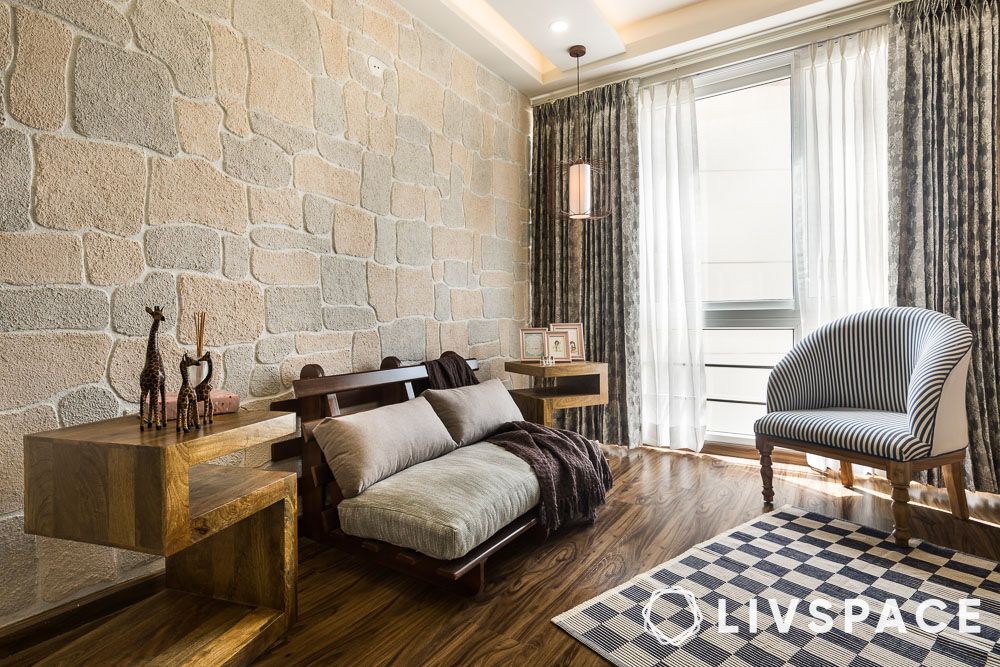
Be it a 3BHK interior design or a bungalow design, it helps to do a little homework before meeting with an interior designer. Here’s what you can do:
- Bring the floor plan: This can give the designer a better visualisation of the place. Additionally, you can also note down the room-wise dimensions
- Define the scope of work: Give them a brief of all the changes you need in your home. You don’t have to give them a complete plan, even a rough idea will do
- Tell your budget: Give your designer a range. This helps them calculate expected expenses. Moreover, this also helps in selecting products quickly
- Talk about your style: Colours, elements, design style—give them a brief of your preferences. This helps them design your home according to your taste
Also Read: Easy Checklist to Help Prepare for Your First Designer Meeting
#8: What is the difference between interior design and interior decoration?
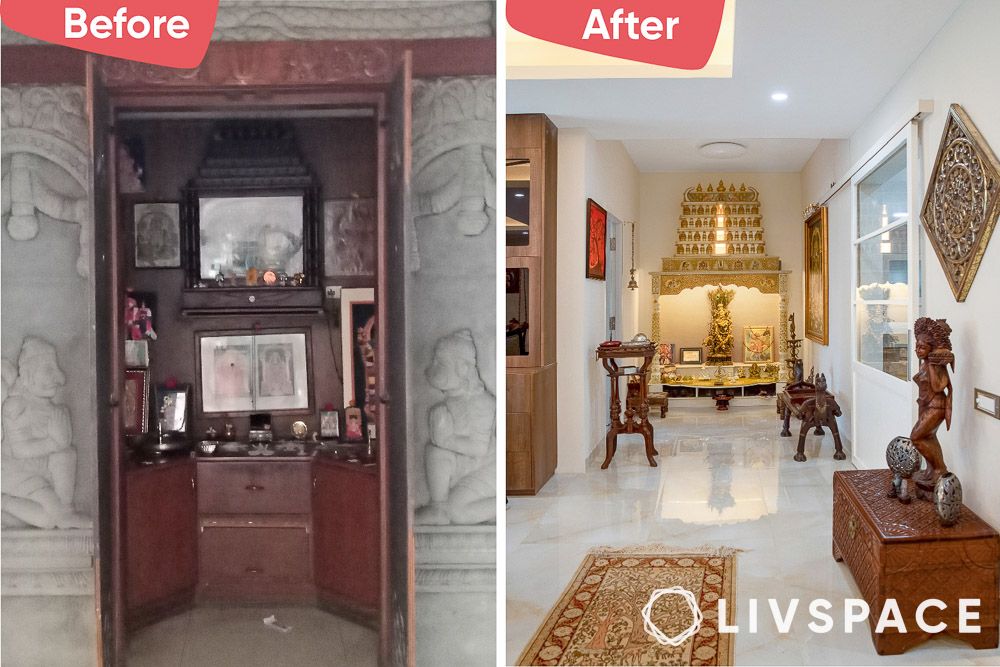
This is like asking the difference between a doctor and someone who’s really good at applying band-aids. Interior design is the comprehensive approach—space planning, structural modifications, understanding building codes, and creating functional layouts that work for real life.
Interior decoration is the aesthetic layer—choosing colour schemes, arranging furniture, styling surfaces, and making everything look magazine-worthy. Designers work with the bones of a space, whilst decorators work with the flesh.
#9: What are the 7 elements of interior design?
Here are the 7 elements of interior design:
| Elements | Description |
| Space | Both the filled and empty bits |
| Line | The direction and quality of lines in a space: Horizontal, vertical and dynamic |
| Form | The shape and three-dimensional structure of objects and elements in a space |
| Light | Both natural and artificial light |
| Colour | The hue, saturation and value of colours used in a space. |
| Pattern | The arrangement of repeating shapes, colours, or textures in a space |
| Texture | The surface quality of materials in a space |
#10: What are the 5 concepts of interior design?
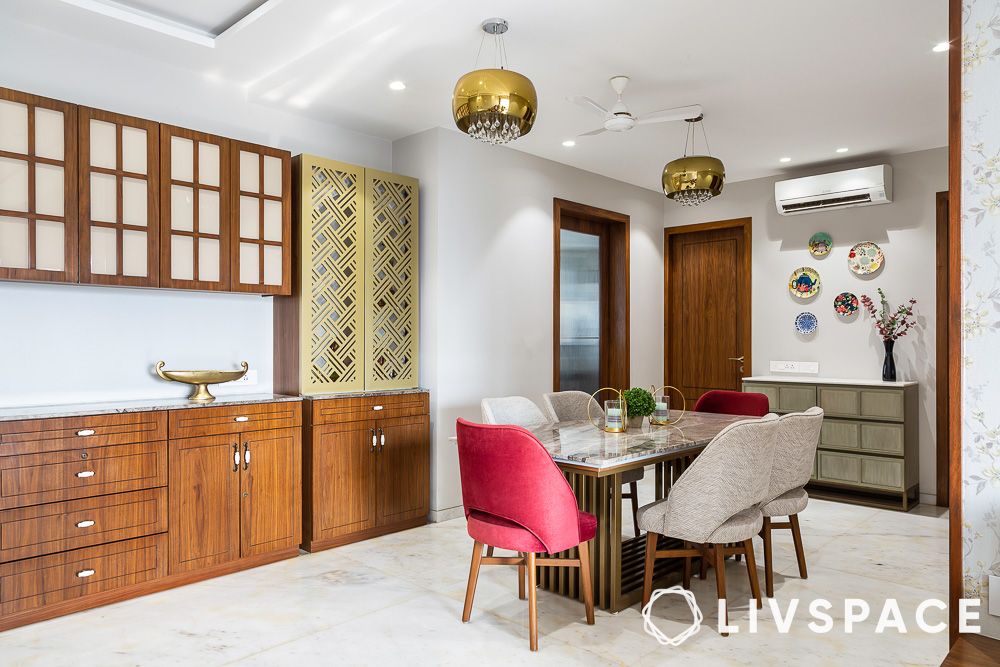
The five concepts of interior design are:
- Balance – Making spaces feel visually stable through symmetrical or asymmetrical arrangements, creating a sense of equilibrium
- Harmony – Harmony involves creating a cohesive and unified space where all elements work together in a way that complements each other
- Focal Point – A focal point is a specific element or area that draws the eye and becomes the centre of attention in the room, like an accent wall in a living room
- Rhythm – This refers to the visual movement and flow within a space. It can be done by establishing a flow through repetition or progression
- Scale and proportion – Scale refers to the size of objects relative to each other and the space, while proportion refers to the relationship between different parts of an object or room
#11: What is the golden rule in interior design?
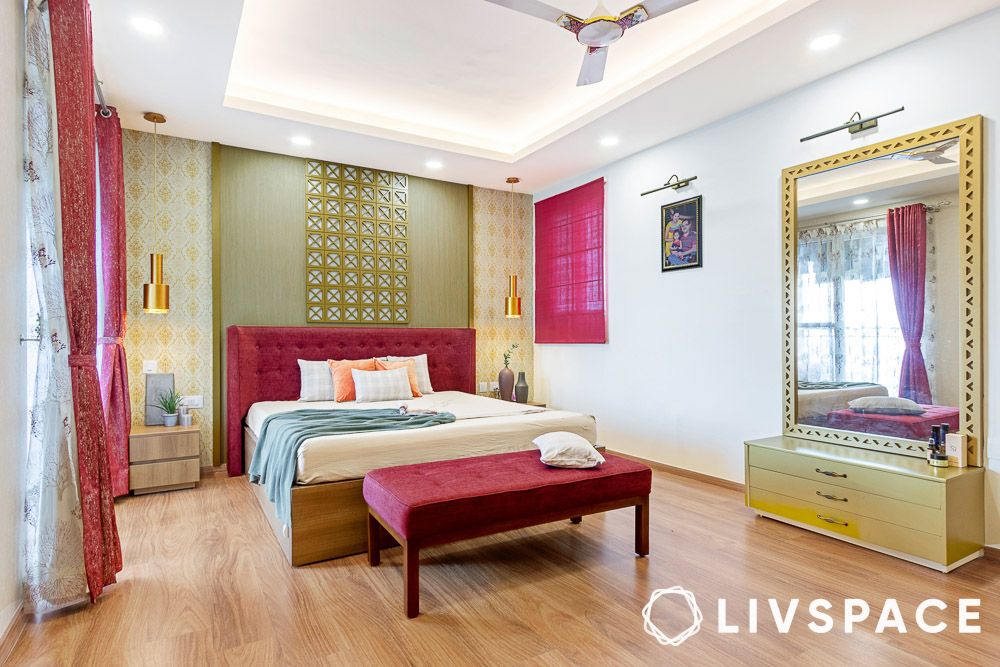
The golden rule is proportion, particularly the 60-30-10 colour rule. Use your dominant colour for 60% of the space, secondary colour for 30%, and accent colour for 10%. This creates balanced schemes that don’t overwhelm your senses.
Another golden principle: form follows function. Beautiful spaces must actually work for the people living in them. There’s no point having a stunning sofa if it’s uncomfortable, or a gorgeous dining table design that’s too small for your family.
#12: What are budget-friendly interior design ideas for Indian homes?
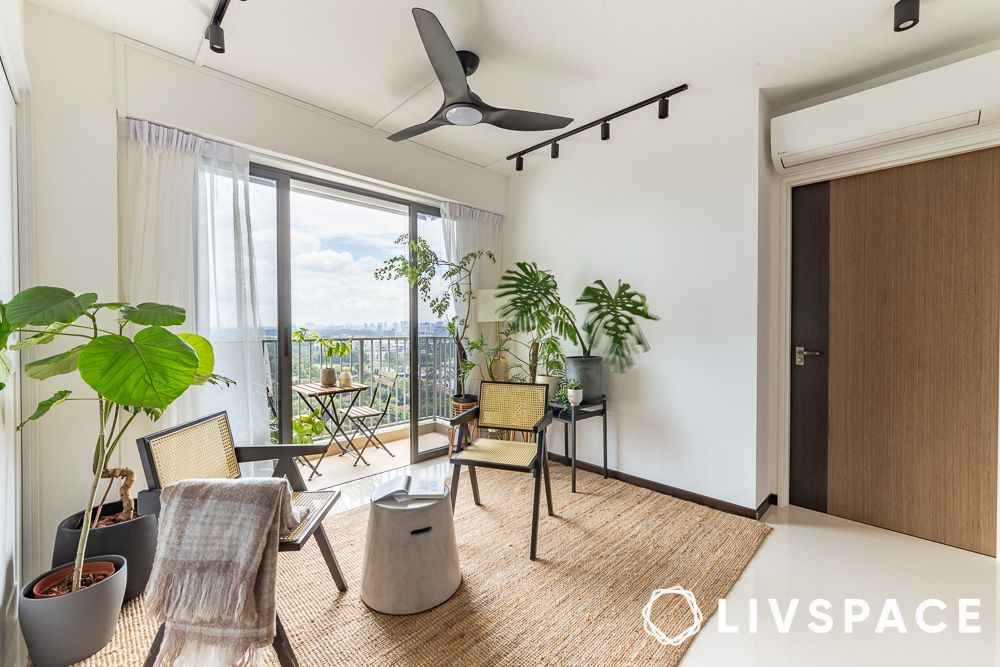
Fresh paint is your best friend—it transforms spaces instantly and costs relatively little. Consider accent walls or unexpected ceiling colours for drama.
DIY artwork, indoor plants, and strategic lighting can create expensive looks on a shoestring budget. Focus on high-impact areas like entryways and living rooms. Shop local markets for unique accessories, vintage textiles, and brass pieces that add character.
Repurpose creatively—old ladders become bookshelves, vintage trunks transform into centre tables for the living room, and mason jars make charming light fixtures. Invest in quality basics like good lighting and comfortable seating, then layer personality through affordable accessories.
#13: How do I incorporate Vastu Shastra into modern interior design?
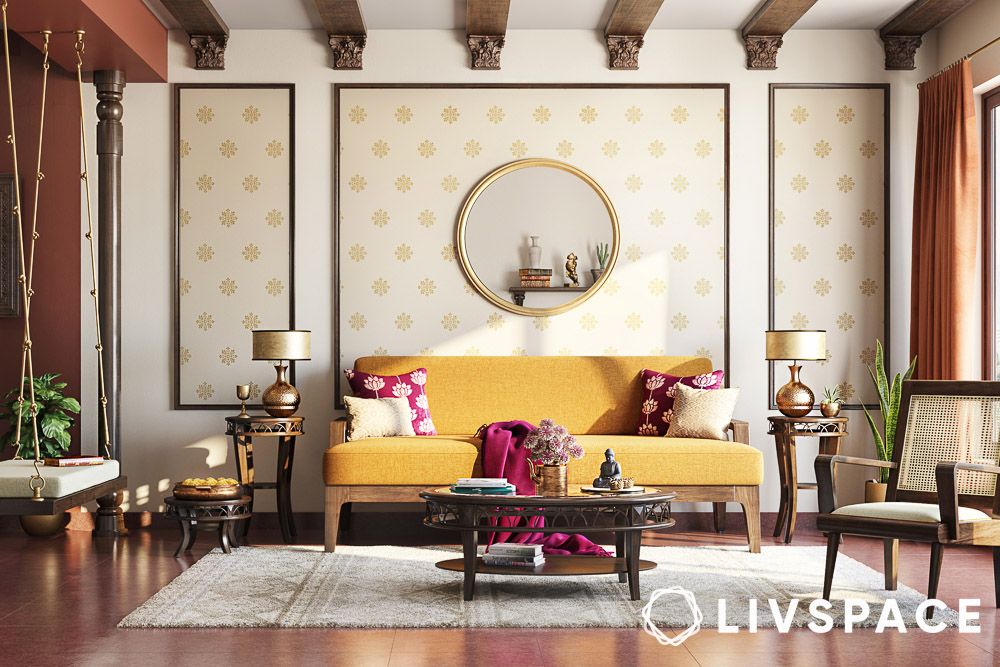
Vastu principles can easily blend with contemporary aesthetics through thoughtful planning. Position main entrances towards north, east, or northeast. Place kitchens in southeast corners whilst keeping master bedrooms in southwest areas for optimal energy flow.
Use natural materials like wood and stone, ensure adequate natural light, and maintain clutter-free spaces. Water features in northeast corners are believed to enhance prosperity, whilst mirrors should be avoided in bedrooms for peaceful sleep. For the full list, check out our guide on Vastu Shastra tips.
What are the latest interior design trends in India for 2025?
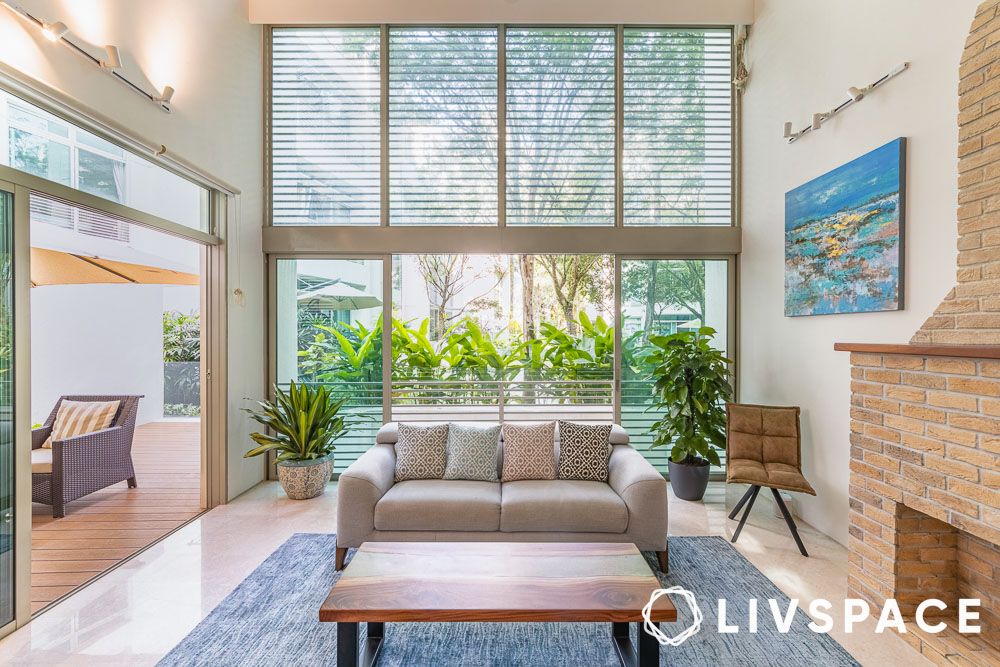
- Biophilic design—bringing nature indoors through living walls, natural materials, and organic shapes—dominates contemporary Indian homes
- Earthy palettes featuring terracotta, sage green, and warm neutrals reflect our growing environmental consciousness
- Smart home integration is becoming standard rather than a luxury—automated lighting, climate control, and security systems that blend seamlessly with design aesthetics
- Curved furniture and organic shapes are softening the angular lines of modern architecture
- Maximalist patterns and bold wallpapers are making triumphant comebacks, celebrating Indian craftsmanship and heritage
- Flexible home office designs that accommodate work-from-home lifestyles remain crucial
- Vintage and antique pieces mixed with contemporary elements create personalised, sustainable interiors that tell individual stories rather than following cookie-cutter trends
How can Livspace help you?
Starting your interior design journey can be daunting and exhausting. But with the right people next to you, it will be a hassle-free journey of building your dream home.
- Our expert team can custom-design your dream home with curated render designs and expert advice
- We have delivered over 75,000+ happy homes
- Count on us for high-quality and durable materials
If you want your home to be as beautiful as Livspace homes, then look no further. Book an online consultation with Livspace today.

